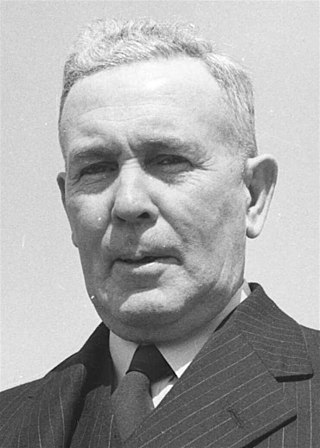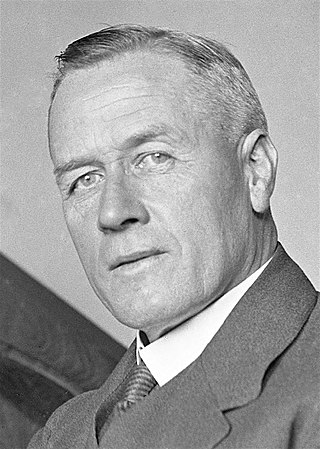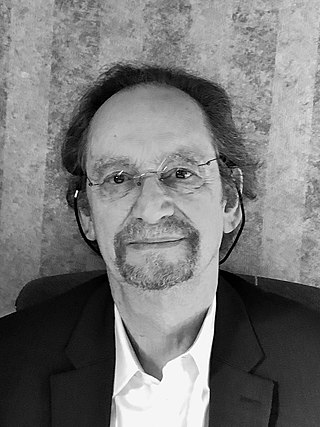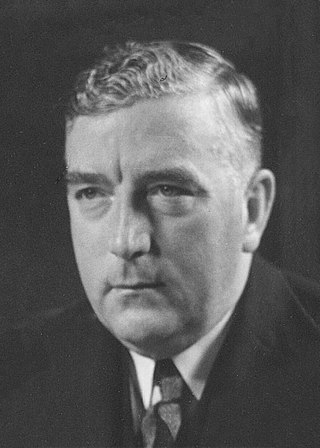Related Research Articles

The Australian Labor Party (ALP), also commonly known as the Labor Party or simply Labor, is the major centre-left political party in Australia and one of two major parties in Australian politics, along with the centre-right Liberal Party of Australia. The party has been in government since being elected at the 2022 federal election, and with political branches in each state and territory, they currently form government in New South Wales, Queensland, South Australia, Victoria, Western Australia, the Australian Capital Territory, and the Northern Territory. As of 2023, Tasmania is the only state or territory where Labor forms the opposition. It is the oldest continuous political party in Australian history, being established on 8 May 1901 at Parliament House, Melbourne, the meeting place of the first federal Parliament.

The prime minister of Australia is the head of government of the Commonwealth of Australia. The prime minister chairs the Cabinet and thus heads the federal executive government. Under the principles of responsible government, the prime minister is both a member and responsible to Parliament. The current prime minister is Anthony Albanese of the Australian Labor Party, who assumed the office on 23 May 2022.

Sir Robert Gordon Menzies was an Australian politician and lawyer who served as the 12th prime minister of Australia from 1939 to 1941 and 1949 to 1966. He held office as the leader of the United Australia Party (UAP) in his first term, and subsequently as the inaugural leader of the Liberal Party of Australia, which he was responsible for establishing and defining in policy and political outreach. He is the longest-serving prime minister in Australian history.

The United Australia Party (UAP) was an Australian political party that was founded in 1931 and dissolved in 1945. The party won four federal elections in that time, usually governing in coalition with the Country Party. It provided two prime ministers: Joseph Lyons (1932–1939) and Robert Menzies (1939–1941).
Paul John Kelly is an Australian political journalist, author and television and radio commentator from Sydney. He has worked in a variety of roles, principally for The Australian newspaper and is currently its editor-at-large. Kelly also appears as a commentator on Sky News Australia and has written seven books on political events in Australia since the 1970s including on the 1975 Australian constitutional crisis. Recent works include The March of Patriots, which chronicles the creation of a modern Australia during the 1991–2007 era of prime ministers, Paul Keating and John Howard, and Triumph & Demise which focuses on the leadership tensions at the heart of the Rudd-Gillard Labor governments of 2007 to 2011. Kelly presented the Australian Broadcasting Corporation (ABC) TV documentary series 100 Years – The Australian Story (2001) and wrote a book of the same title.

Joseph Benedict Chifley was an Australian politician and train driver who served as the 16th prime minister of Australia from 1945 to 1949. He held office as the leader of the Australian Labor Party (ALP), having previously served as the treasurer of Australia under Prime Minister John Curtin and later himself from 1941 to 1949. He was notable for defining Australia's post-war reconstruction efforts.

Sir Isaac Alfred Isaacs, was an Australian lawyer, politician, and judge who served as the ninth Governor-General of Australia, in office from 1931 to 1936. He had previously served on the High Court of Australia from 1906 to 1931, including as Chief Justice from 1930.

Sir Paul Meernaa Caedwalla Hasluck, was an Australian statesman who served as the 17th Governor-General of Australia, in office from 1969 to 1974. Prior to that, he was a Liberal Party politician, holding ministerial office continuously from 1951 to 1969.

Julia Eileen Gillard is an Australian former politician who served as the 27th prime minister of Australia from 2010 to 2013. She held office as leader of the Australian Labor Party (ALP), having previously served as the 13th deputy prime minister of Australia from 2007 to 2010, under Prime Minister Kevin Rudd. She is the first and only woman to hold either office in Australian history.
The Australian Government, also known as the Commonwealth Government, is the national government of the Commonwealth of Australia, a federal parliamentary constitutional monarchy. The executive government consists of the prime minister and other ministers that currently have the support of a majority of members of the House of Representatives and in some contexts also includes the departments and other executive bodies that ministers oversee. The current executive government consists of Anthony Albanese and other Australian Labor Party ministers, in place since the 2022 federal election.

Sir John Greig LathamGCMG PC QC was an Australian lawyer, politician, and judge who served as the fifth Chief Justice of Australia, in office from 1935 to 1952. He had earlier served as Attorney-General of Australia under Stanley Bruce and Joseph Lyons, and was Leader of the Opposition from 1929 to 1931 as the final leader of the Nationalist Party.

The politics of Australia operates under the written Australian Constitution, which sets out Australia as a constitutional monarchy, governed via a parliamentary democracy in the Westminster tradition. Australia is also a federation, where power is divided between the federal government and the states and territories. The monarch, currently King Charles III, is the head of state and is represented locally by the Governor-General of Australia, while the head of government is the Prime Minister of Australia, currently Anthony Albanese.
In Australian politics, leadership spill is a colloquialism referring to a declaration that the leadership of a parliamentary party is vacant and open for contest. A spill may involve all or some of the leadership positions. Where a rival to the existing leader calls for a spill it may also be called a leadership challenge. When successful, it is often said that the former leader has been "rolled". In Australian English the colloquial use of the word "spill" seems to have begun in the mid-1940s with the contest to replace Prime Minister John Curtin after his death on 5 July 1945.

Roderick Arthur William Rhodes, usually cited as R. A. W. Rhodes, is a British professor of political science.

The Gorton government was the federal executive government of Australia led by Prime Minister John Gorton. It was made up of members of a Liberal-Country Party coalition in the Australian Parliament from January 1968 to March 1971.

Richard Gavin Gardiner Casey, Baron Casey, was an Australian statesman who served as the 16th Governor-General of Australia, in office from 1965 to 1969. He was also a distinguished army officer, long-serving cabinet minister, Ambassador to the United States, member of Churchill's War Cabinet, and Governor of Bengal.
Professor Anne Tiernan is from Brisbane, Queensland, Australia. Tiernan is a writer, educator, political scientist, and consultant in areas of public administration, public policy and research analysis. She is known for her research expertise in policy and has presented at conferences both nationally and internationally. She has a regular weekly radio slot on 'Weekends with Tim Cox' on 612 ABC Brisbane. Tiernan is currently the Professor at the Centre for Governance and Public Policy at Griffith University and Fellow of ANZSOG.

The United Australia Party held a leadership election on 18 April 1939, following the death in office of Prime Minister Joseph Lyons on 7 April. Robert Menzies narrowly defeated Billy Hughes – a former Nationalist prime minister – on the third ballot, following the earlier elimination of Treasurer Richard Casey and Trade Minister Thomas White. Another former prime minister, Stanley Bruce, had also been considered a leadership contender, but for various reasons he was never nominated. Menzies was not sworn in as prime minister until 26 April.

The Prime Minister's Office (PMO), also known as the Office of the Prime Minister, is the private office of the Prime Minister of Australia that provides political advice and executive support to the Prime Minister. The PMO is led by the Prime Minister's Chief of Staff and or Principal Private Secretary and is composed of ministerial advisers assisting with party politics, media relations, and political strategy. Scholars including Professor Anne Tiernan of Griffith University and Professor James Walter of Monash University have observed the centralisation and expansion of power within the PMO over the past three decades.
References
- ↑ [The Gatekeepers: Lessons from prime ministers’ chiefs of staff] RAW Rhodes and Anne Tiernan. Melbourne University Press 2014
- ↑ The Prime Ministers’ Chiefs The Wheeler Centre 2014
- ↑ Museum of Australian Democracy at Old Parliament House
- ↑ The Pivot of Power: Australian Prime Ministers and Political Leadership, 1949–2016 Museum of Australian Democracy at Old Parliament House
- ↑ "What does the PM's chief of staff really do? - Between The Lines - ABC Radio National". Australian Broadcasting Corporation .